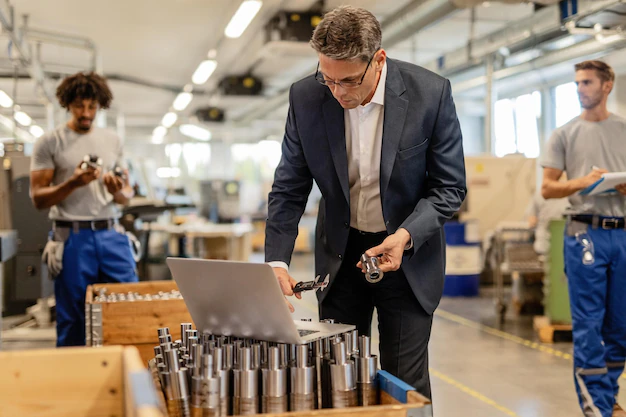The Economic Benefits Of Utilizing Metallurgy Consulting For Industrial Projects

Innovation and efficiency are the cornerstones of success on industrial projects, and metallurgy consulting emerges as a hidden gem. Metallurgy, the science of materials and their properties takes center stage in the quest for excellence.
This article covers the economic benefits that come to fruition when metallurgical consulting services are integrated seamlessly into industrial projects. You will discover if you need a metallurgical consulting company by reading this article.
What is Metallurgy Consulting?
Metallurgical engineering consulting helps shape industrial endeavors. Metallurgy consultants are the architects of material science, experts in deciphering the characteristics of metals and alloys, and professionals who transform raw materials into the backbone of industrial structures. Their scope extends beyond material selection as they ensure industrial projects’ durability, performance, and cost-effectiveness.
Economic Impact of Metallurgy Consulting
Cost Savings through Material Optimization
A metallurgy consultant can influence the economic landscape of industrial projects through astute material optimization. These professionals pave the way for significant cost savings by meticulously selecting cost-effective materials tailored to a project’s requirements. As a result, there is material waste reduction that aligns financial prudence with environmental responsibility.
Practical examples abound where the implementation of metallurgical consultancy has led to a substantial decrease in production costs. A case in point is the aerospace industry, where the selection of lightweight yet robust materials reduces manufacturing expenses and enhances fuel efficiency, creating a ripple effect of economic benefits.
Enhanced Performance and Durability
The economic impact of collaborating with a metallurgy consulting firm extends far beyond immediate cost savings. Consultants or consulting companies elevate industrial components’ performance and durability by fine-tuning material properties. This, in turn, translates into prolonged lifespans and reduced maintenance costs.
You can consider the automotive sector, where a metallurgy engineering consultant helps develop alloys that withstand the rigors of daily use. The result is cars that require less frequent repairs, reduced downtime, and a boost in consumer confidence. This symbiotic relationship between enhanced performance and economic sustainability testifies to the value of metallurgy consulting.
Risk Mitigation and Avoidance of Failures
Metallurgical consulting services help prevent catastrophic failures that could have far-reaching economic consequences by identifying potential weaknesses in materials and structures. The cost of avoiding such failures is not merely monetary, as it encompasses preserving reputation, customer trust, and the overall health of the industry ecosystem.
Imagine a scenario in the construction sector where a skyscraper, built with suboptimal materials, faces structural issues. The economic ramifications, including legal battles, loss of property value, and the potential for injury or loss of life, underscore the vital role of a metallurgy consultant in risk mitigation.
Potential Economic Benefits in Growing Industries
Growing industries like renewable energy and space exploration can gain immensely from the economic benefits of metallurgical engineering consulting. As these sectors push the boundaries of what is technologically possible, the role of metallurgy consultants becomes increasingly essential. Whether it is developing materials for next-generation solar panels or alloys that withstand the harsh conditions of space, metallurgy consulting becomes the linchpin of economic success in these dynamic fields.

Considerations for Industrial Decision-Makers
Evaluating the Return on Investment (ROI)
The economic impact of metallurgical engineering consulting should be viewed through the lens of return on investment. While associated upfront costs with consulting services are likely, the long-term economic benefits, including cost savings, risk mitigation, and enhanced performance, far outweigh these initial expenditures.
Choosing the Right Metallurgy Consulting Partner
The success of any collaboration hinges on choosing the right metallurgical consulting company or consultant. Expertise, track record, and collaborative approach should be paramount when selecting a metallurgy consulting firm. A partner who understands the unique challenges and goals of the industry will be instrumental in unlocking the full economic potential of metallurgy consulting.
Long-Term Economic Sustainability
Integrating metallurgical consultancy is a commitment to long-term economic sustainability. Decision-makers should envision the economic benefits as part of a continuous journey, where the insights of metallurgy consultants contribute to ongoing improvements, innovation, and adaptability in the face of evolving challenges.
Conclusion
Metallurgy consulting orchestrates the harmonious blend of materials, technology, and economic prudence on industrial projects. The economic benefits, like cost savings and risk mitigation, are the byproducts and intentional outcomes of a well-executed partnership between industries and metallurgy consultants. Therefore, employing metallurgical consulting services is an investment in the economic prosperity of your industrial projects.
Read Also:













